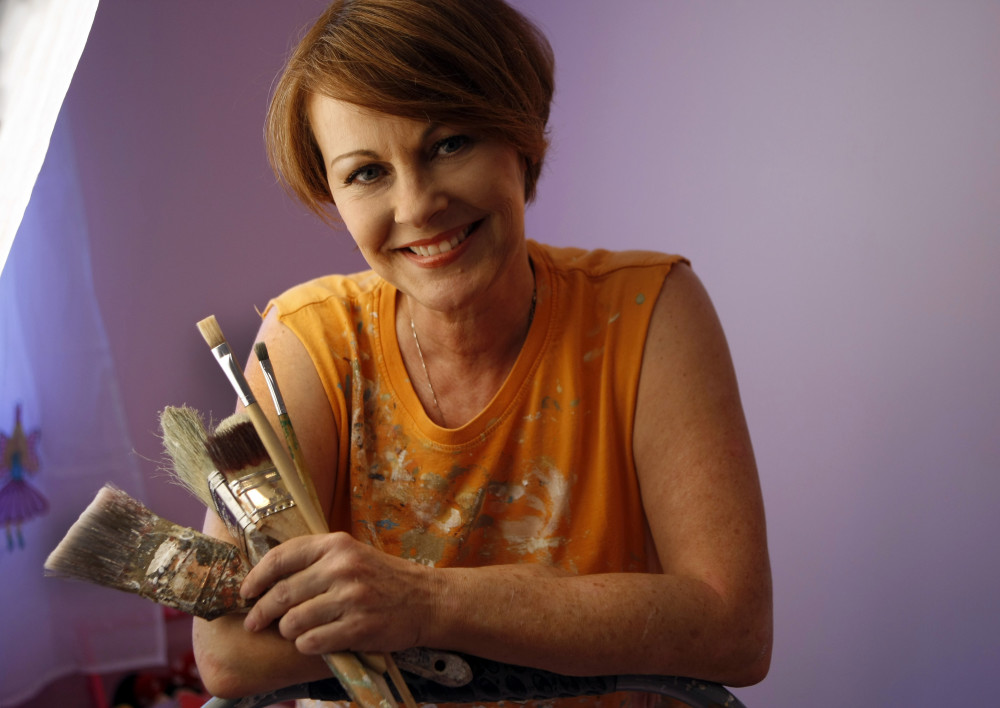By Tom Eblen
Lexington Herald-Leader.
Lexington is starting to become a city where an artist can earn a living, but it requires almost as much focus on business as art.
Successful artists tell me they have had to learn strategy, salesmanship, client management and finance to earn money from their passion.
Most of all, they have had to be flexible entrepreneurs, willing to try new things and see where they lead.
I talked about these issues last week with John Lackey, an independent artist in Lexington for a dozen years. Since 2010, he has operated Homegrown Press Studio & Gallery at the corner of Limestone and East Sixth streets.
Lackey is best known for his intricate block prints and colorful acrylic paintings of Kentucky landscapes. They are fanciful scenes from nature, filled with swirling clouds and curly trees that almost seem to dance.
But Lackey does a lot more, both out of passion and necessity. He has done logos and other commercial art for businesses, including Alfalfa restaurant, where he once worked, and North Lime Coffee and Donuts, which shares his studio building. He also has produced more than a dozen concert posters for his favorite band, Wilco.
Lackey, this month, was commissioned by Kroger to paint an outside mural for its new Euclid Avenue store. The five interconnected, 12-by-7-foot panels along Marquis Avenue will depict “the trees with the most personality in Woodland Park, with human activity in the background,” he said.
He also is getting into filmmaking, after years of playing with time-lapse and animation photography. Lackey has an Indiegogo.com campaign that runs through Tuesday to raise money for a full-length movie. It will be set in Lexington’s northside and focus on themes of community and sustainability.
Lackey learned figurative art and print-making at the University of Kentucky, but some of his most useful professional skills were acquired during several years of hiatus between his studies, when he worked at lumber yards and car dealerships.
“I learned a lot that I still use today when I sold cars,” he said, including negotiating skills and how to read customers.
Lackey spent 14 years as a graphic artist for two Lexington TV stations, where he learned more about art and deadlines. He was then able to begin building an independent art career, thanks to an understanding wife with a steady paycheck.
Early on, he realized the work is a lot like being a home-improvement contractor. Customers who commission work have ideas, but often don’t know exactly what they want. That’s where listening skills and artistry come in.
Lackey said that being willing to try new things has helped him both get jobs and stretch artistically.
“At first, I didn’t do a lot of saying no, because I needed the money, and it pushed me out of my comfort zone,” he said. “It’s good if you have different things you like to do in art.”
The Kentucky Arts Council helped Lackey expose his work to potential clients. After being included in a show at the Governor’s Mansion, he was chosen to create the 2011 prizes for the Governor’s Award in the Arts.
The council also helped him get a commission for four seasonal landscape paintings that now hang in the Kentucky Chamber of Commerce’s board room in Frankfort.
Many artists advise against doing free work to get exposure. While Lackey generally agrees, he follows his instinct on some projects where the payoff isn’t obvious.
For example, as a Wilco fan, he engaged others on the band’s website and volunteered to do artwork for a charity event. The band liked it and hired him to create concert posters.
The head of the Clyde’s restaurant chain around Washington, D.C., also is a Wilco fan. He saw Lackey’s posters and hired him to do artwork for the restaurants. The Clyde’s work was seen by Virginia-based Potter’s Craft Cider, which hired him to design its logo and labels. Such jobs can be vital income bridges between fine art projects.
Other free artwork has enriched his life, if not his bank account. Lackey has done more than 60 posters for the Holler Poet’s series at Al’s Bar, across East Sixth Street from his studio, where he occasionally reads his own poetry. Each poster became an opportunity to experiment with new techniques that have improved his work.
“For me, one of the benefits of being an artist is not having to do the same thing twice,” he said. “It keeps your brain regenerating.”














































































































































































































































































































































































